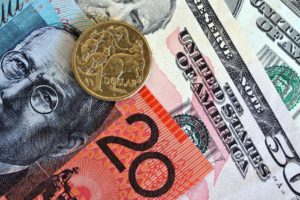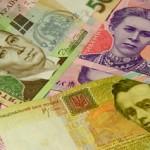 Australian dollar fell below 87 U.S. cents for the first time since July 2010, after according to the Wall Street Journal, Reserve Bank of Australia (RBA) board member Heather Ridout said an exchange rate for the Aussie around 80 U.S. cents would be a fair deal for everybody, including export and import-oriented companies. At the same time, the Banking Regulatory Commission in China ordered an increased scrutiny of credit risks in the coal-mining sector.
Australian dollar fell below 87 U.S. cents for the first time since July 2010, after according to the Wall Street Journal, Reserve Bank of Australia (RBA) board member Heather Ridout said an exchange rate for the Aussie around 80 U.S. cents would be a fair deal for everybody, including export and import-oriented companies. At the same time, the Banking Regulatory Commission in China ordered an increased scrutiny of credit risks in the coal-mining sector.
AUD/USD plunged to a daily low at 0.8690 at 5:20 GMT, also the pairs lowest point since July 20th 2010, after which consolidation followed at 0.8704, falling 0.73% for the day. Support was likely to be found at July 20th 2010 low, 0.8684, while resistance was to be met at January 23rd high, 0.8845.
The Chinese Banking Regulatory Commission’s order did not mention concerns that a 3 billion yuan (or 496 million USD) trust product distributed by Industrial & Commercial Bank of China Ltd. may default after the coal miner, which borrowed these funds collapsed, Bloomberg reported today. This news influenced the Australian currency, because China is Australias largest export market.
“The Aussie is very sensitive to perceptions of risk,” said Joseph Capurso, a Sydney-based strategist at Commonwealth Bank of Australia, cited by the same media. “If you’re an investor and thinking of which currency you want to short because of emerging-market problems, you sell the Aussie because it’s a liquid commodity currency with a current account deficit.”
In addition, Reserve Bank of Australia board member Heather Ridout said that the national currency had still room to depreciate, according to the Wall Street Journal.
The yield on Australian three-year government bonds fell 15 basis points, or 0.15 percentage point, to reach 2.82%, marking the most considerable move on a daily basis since September 19th.
Meanwhile, demand for the US dollar continued to be underpinned by a recent string of overall optimistic reports, which boosted the view of further cuts in Federal Reserves monetary stimulus.
The Bureau of Labor Statistics reported on Thursday that the number of initial jobless claims in the United States rose by 1 000 to 326 000 in the week ended January 18th, from a revised down number of 325 000 during the previous week. Analysts had expected that the people who filed for unemployment assistance will increase to 330 000.
A separate report said that existing home sales in the country increased 1.0% to the annualized 4.87 million units in December, following a three-month streak of declines. According to data by the National Association of Realtors (NAR), existing home sales reached a seven-year high in December 2013 compared to December 2012. During the whole 2013 sales increased to 5.09 million units, or a 9.1% gain in comparison to the whole 2012. Experts had anticipated that existing home sales will reach the annualized 4.93 million units in December. Novembers result has been revised down to 4.82 million from 4.90 million previously.
The average home price in the country was 198 000 USD in December 2013, or a 9.9% increase in comparison with the same month a year ago, which came as a result of weaker supply.
Elsewhere, the Aussie was retreating against the euro, with EUR/AUD cross up 0.82% on a daily basis to trade at 1.5752 at 8:18 GMT. AUD/NZD pair was losing 0.34% to trade at 1.0530 at 8:20 GMT. Australian dollar has been the worst-performing currency among the group of ten developed-nation currencies, depreciating almost 17% during the past 12 months.





